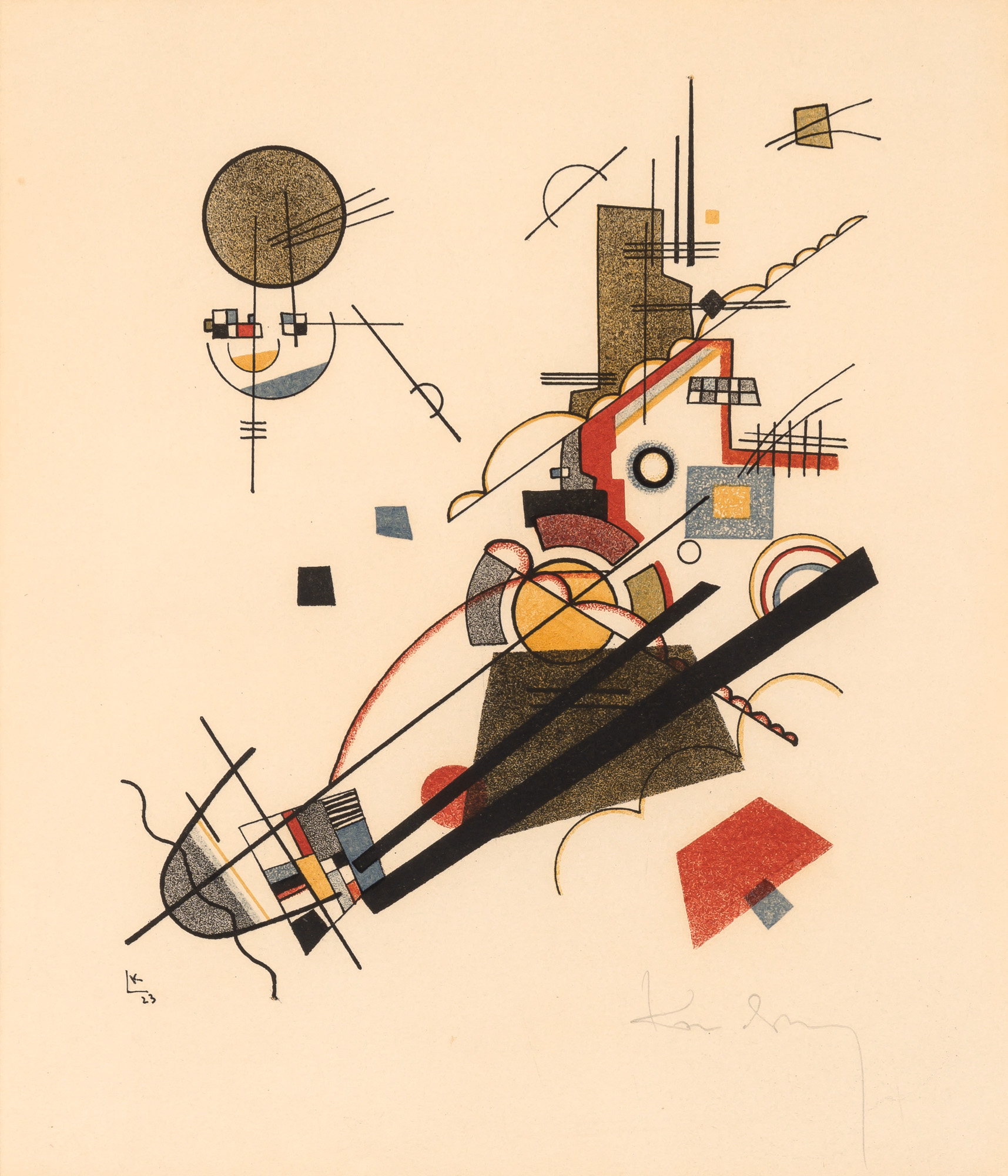Wassily Kandinsky was a Russian-born artist widely regarded as the developer of abstract art in the West. Born in Moscow and originally trained in law and economics at the University of Moscow, Kandinsky did not formally pursue painting until his thirties—a shift that would leave a lasting mark on modern art. His early exposure to Russian folk art and Orthodox religious imagery informed his later emphasis on symbolic color and inner vision.
He studied in Munich, where he became closely associated with the German Expressionist movement, co-founding the influential group Der Blaue Reiter. Through this collective, he collaborated with like-minded artists such as Franz Marc, advancing a philosophy that prioritized the spiritual and intuitive in art. His work broke from traditional representation, using color, line, and form as autonomous expressive elements. This exploration helped lay the groundwork for abstract expressionism and reshaped the language of 20th-century painting.
Due to the hostile political climate of Germany, Kandinsky moved to Neuilly-sur-Seine in 1933, a town outside Paris, and spent his remaining years in France. Even in exile, he continued to refine his visual vocabulary, incorporating biomorphic forms and a lyrical sense of structure. Kandinsky's legacy endures in his belief that art could communicate spiritual and emotional truths beyond the visible world. His contributions continue to influence generations of artists and are central to major public collections worldwide.

